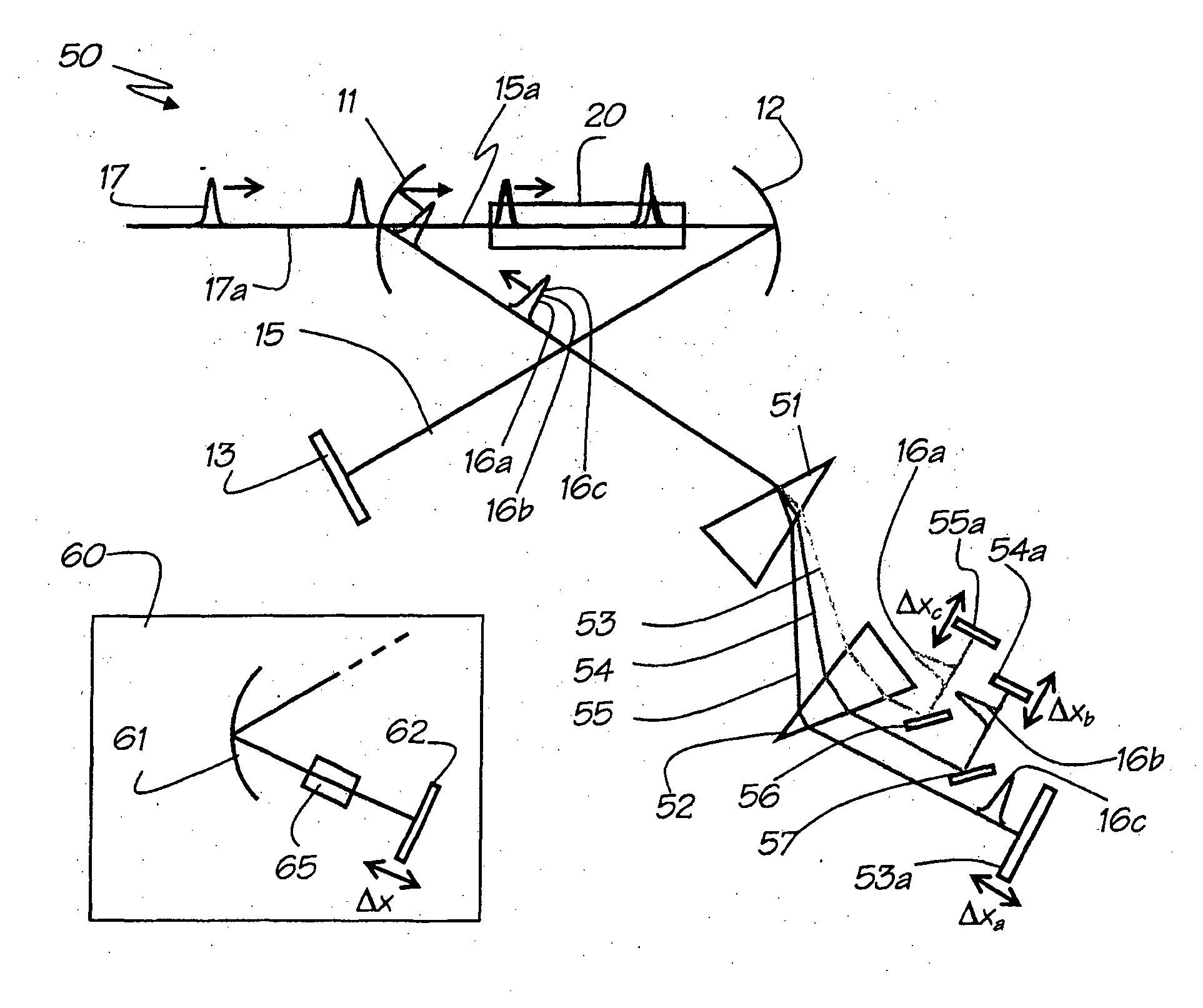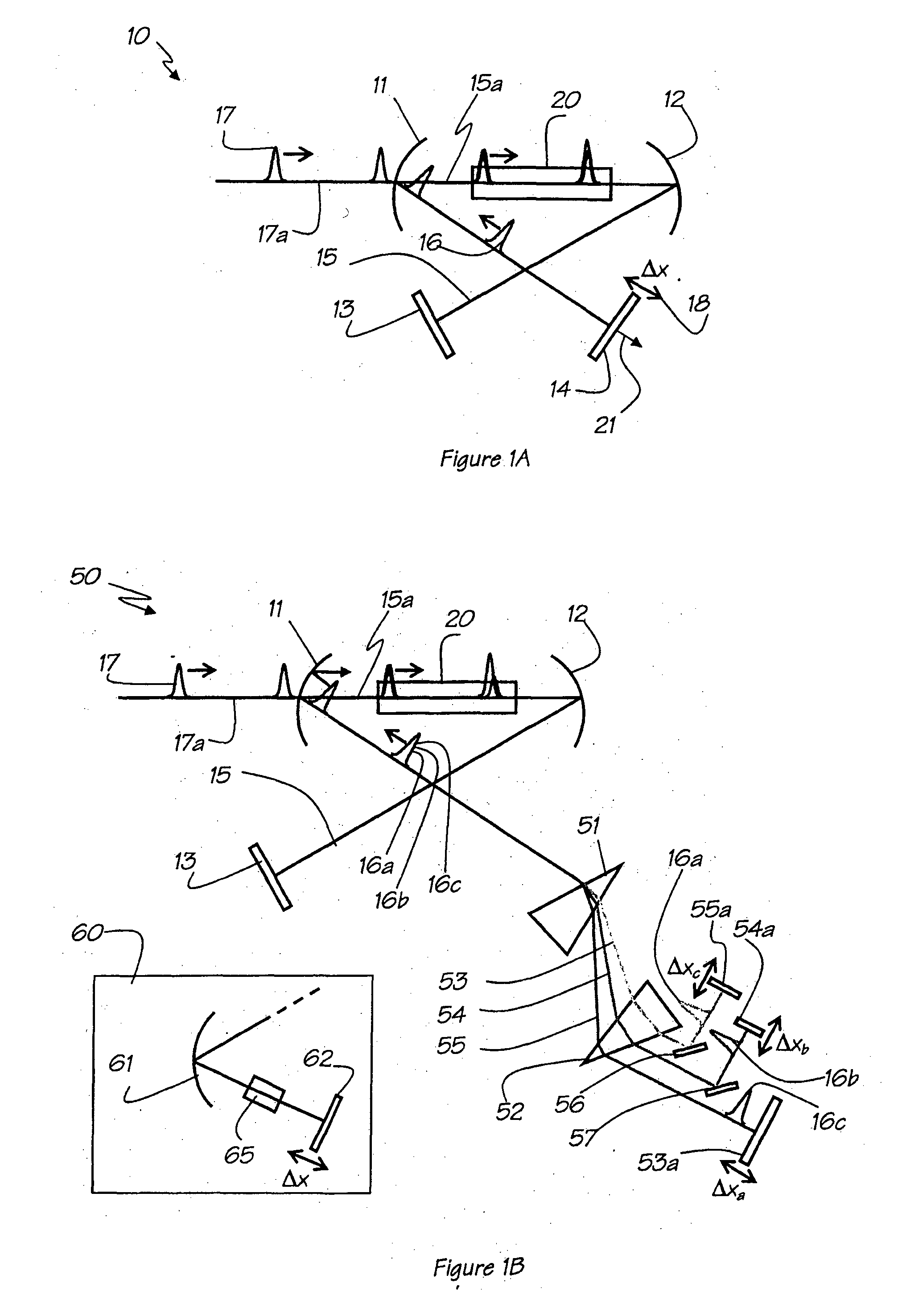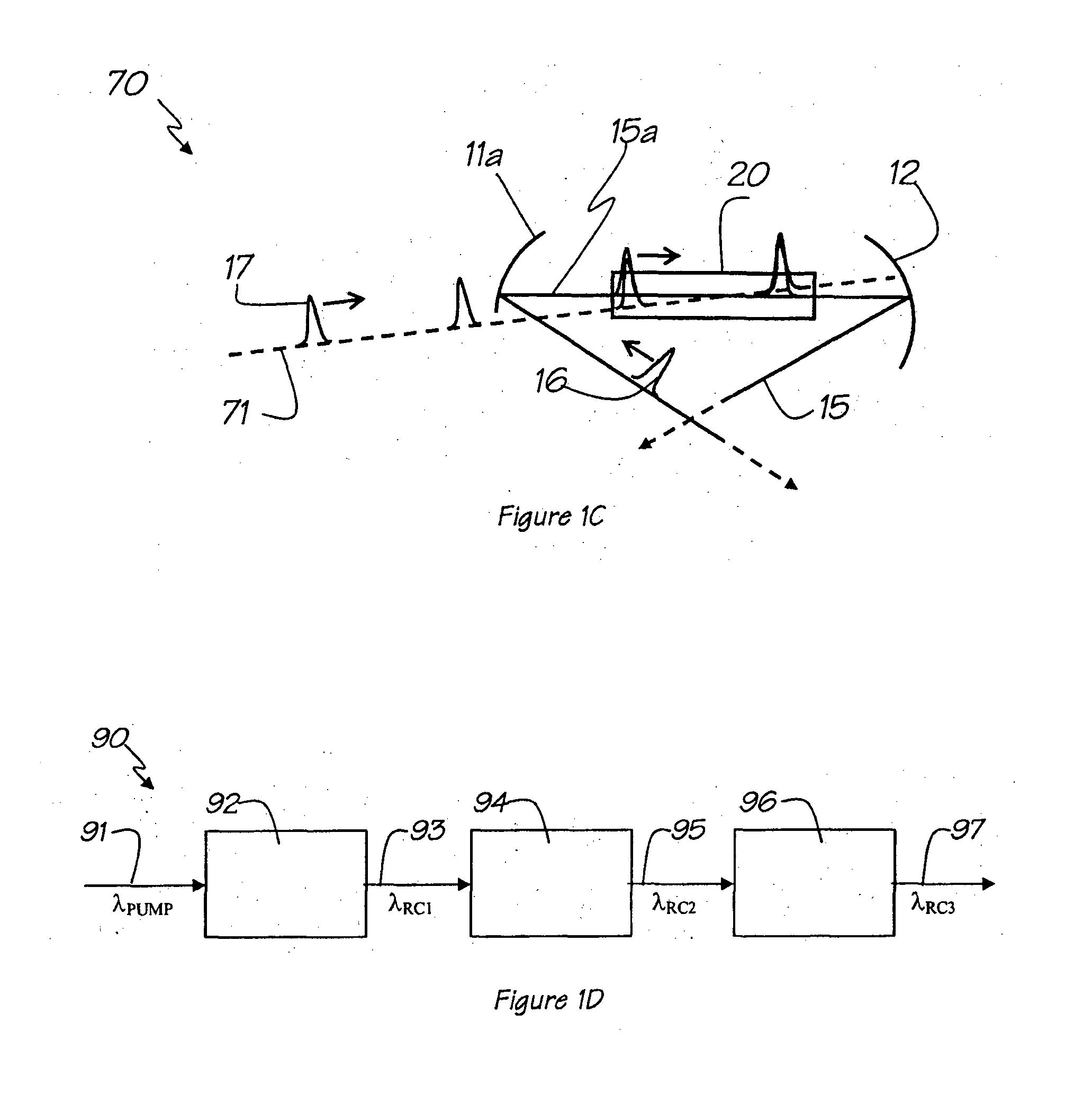Ultrafast raman laser systems and methods of operation
a laser system and ultrafast technology, applied in the direction of laser details, basic electric elements, electrical equipment, etc., can solve the problems of poor coverage, cumbersome, complex and costly to be widely available, and the laser does not provide full spectral coverage, so as to shorten the optical length of the resonator cavity.
- Summary
- Abstract
- Description
- Claims
- Application Information
AI Technical Summary
Benefits of technology
Problems solved by technology
Method used
Image
Examples
example 1
Ultrafast Synchronously Pumped Raman Laser System
[0137]In the present example, a single wavelength synchronously pumped Raman laser system 100 is disclosed schematically in FIG. 2, where HWP 107 is a Half Wave-Plate @532 nm; PBS is a polarizing beam splitter 108; and Δx represents the possible cavity detuning by translating output reflector M4104 along the axis of the resonator cavity 120. A mode-matching telescope system 118 was also employed to adjust the beam diameter of the pump beam 116 in Raman crystal 110 for mode-matching considerations i.e. to match the beam size of the pump beam in the crystal 110 with the size of the cavity mode at the position of the Raman crystal 110.
[0138]In the presently described example, the laser system 100 of FIG. 2 comprises a 50-mm-long KGW Raman crystal 110 as the stimulated Raman scattering (SRS) gain medium. The Raman crystal 110 was antireflection (AR) coated at 532 nm. The crystal 110 was oriented such that the pump beam 116 from a mode-loc...
example 2
Ultrafast Synchronously Pumped Diamond Raman Laser System
[0151]The present example describes an exemplary arrangement 200, depicted schematically in FIG. 5 of a mode locked Raman laser with diamond as the Raman medium, synchronously pumped by a mode locked laser in a further arrangement of a laser system similar to that of laser system 100 as disclosed in Example 1. Using diamond as the Raman crystal offers a greatly extended range of capability. The larger Stokes shift of diamond (1332 cm−1) compared to that of KGW (768 and 901 cm−1), enables an output wavelength of 573 nm from a single Stokes shift when using a 532 nm pump laser. Diamond also has a much higher gain coefficient enabling smaller crystals to be used. The longer dephasing time of diamond (6.8 ps) compared to 3.2 ps for KGW is expected to place a higher limit on the pulse duration and enable the testing of models for pulse compression limits in synchronously pumped Raman lasers as discussed below. Also, the outstanding...
example 3
Ultrafast Synchronously Pumped Multiwavelength Raman Laser System
[0166]In the present example, a further Raman laser system 300 is described, similar to that of the laser system 100 of Example 1, but configured for multi-wavelength and selectable wavelength output.
[0167]An arrangement of the multiwavelength laser system 300 is depicted schematically in FIG. 8 in which Raman crystal 310 (SRS gain medium) is a 50×5×5 mm potassium gadolinium tungstate (KGW) crystal. The Raman crystal 310 has an anti reflection coating at 532 nm, for normal incidence to minimise reflection losses off the crystal surface. The KGW Raman crystal 310 was pumped along its Nm axis to match the 901 cm−1 Raman shift with a pump beam 316 at 532 nm to provide a first Stokes wavelength of 559 nm and a second Stokes wavelength of 589 nm. The pump beam 316 was obtained from a pump source 315 which in the present arrangement was a CW mode-locked Nd:YAG laser producing 22 W at 1064 nm with a repetition rate of 78 MHz....
PUM
 Login to View More
Login to View More Abstract
Description
Claims
Application Information
 Login to View More
Login to View More - R&D
- Intellectual Property
- Life Sciences
- Materials
- Tech Scout
- Unparalleled Data Quality
- Higher Quality Content
- 60% Fewer Hallucinations
Browse by: Latest US Patents, China's latest patents, Technical Efficacy Thesaurus, Application Domain, Technology Topic, Popular Technical Reports.
© 2025 PatSnap. All rights reserved.Legal|Privacy policy|Modern Slavery Act Transparency Statement|Sitemap|About US| Contact US: help@patsnap.com



